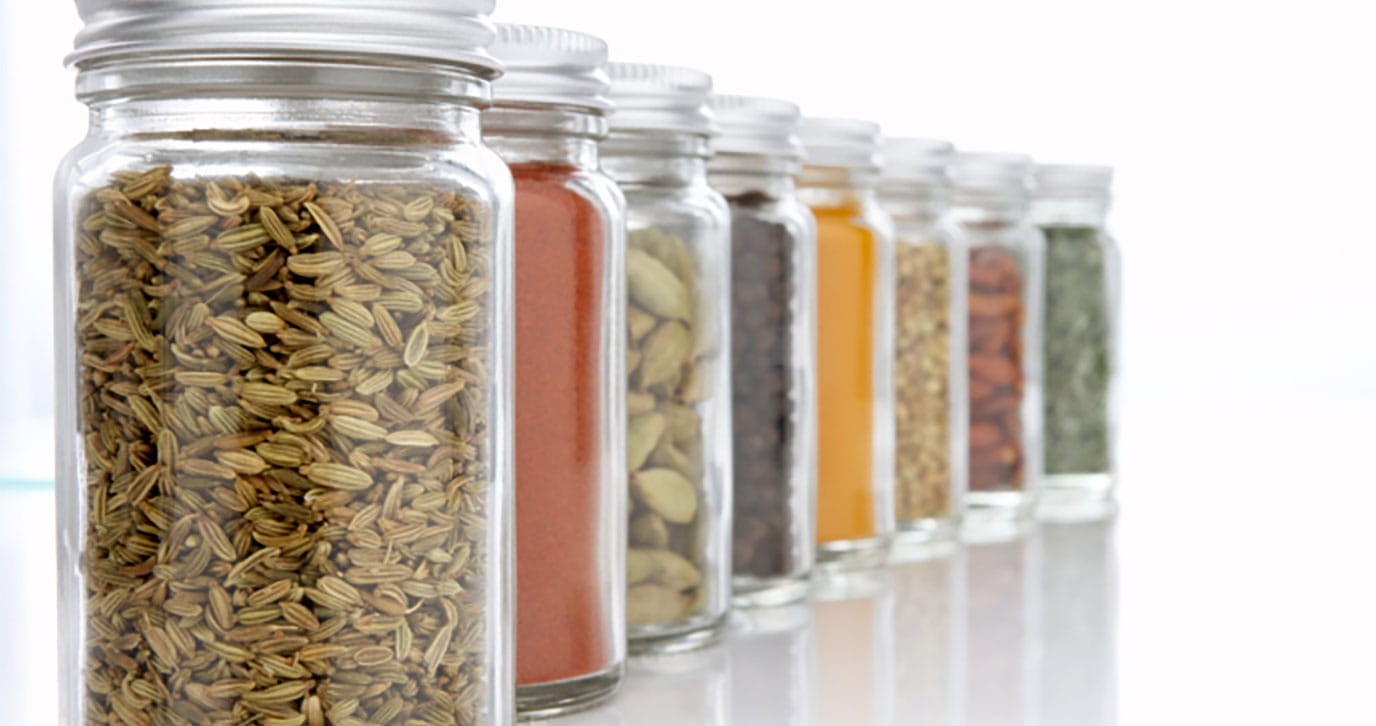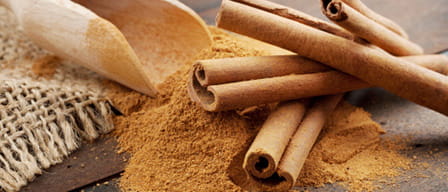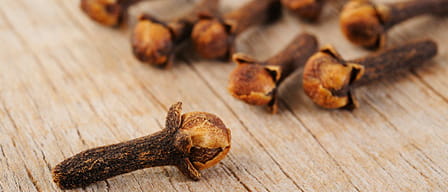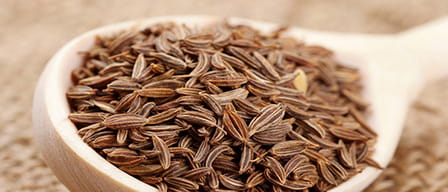
Black Pepper


Cloves are the dried, unopened, nail-shaped flower buds of the evergreen tree Syzygium aromaticum. The name “clove” derives from the Latin word for nail, clavus (because of its shape). Clove goes by many names in different languages such as ding xiang (Mandarin Chinese), laung (Hindi), clavo (Spanish), clou de girofle (French), chiodo di garofano (Italian), qurnafl (Arabic), and nelke (German)(1).
Cloves come from the flower buds of an evergreen tree that is native to the North Moluccas Islands in Indonesia. Clove trees grow to about 26-40 feet and flower after about 6 years. The tree becomes fully mature in 20 years and can bear fruit for more than 80 years. The flower buds gradually develop in color and are ready for collecting when they turn bright red. Cloves are handpicked before the flower opens. Harvested cloves are 0.5-0.75 inches long and consist of stems with four unopened petals which form a small ball in the center. After harvesting, clove buds are spread out in a thin layer on a mat to dry in the sun or by using an artificial dryer (1-3).


Botanically, cloves are a member of the Myrtaceae (myrtle) family.
|
Common Name |
Primarily grown in... |
Botanical Name (and alternates)... |
|
Cloves |
Indonesia, Sri Lanka, China |
Syzygium aromaticum (Eugenia aromatica) (Eugenia caryophyllus) (Caryophyllus aromatica) |
In 2022, the major producers of the world’s cloves were Indonesia, Sri Lanka Madagascar and China (4).
The first references to cloves are found in Asian literature from the Chinese Han period under the name "chicken-tongue spice". From the 8th century on, cloves became one of the major spices in European commerce. In the Moluccas Islands (now part of Indonesia), where cloves were first discovered, parents planted a clove tree when a child was born. When the clove forests were first discovered, all were enchanted with the fragrance and beauty of this tropical evergreen tree which "must always see the sea" in order to thrive. Cloves were extremely costly and played an important part in world history. Wars were fought to secure exclusive rights to the profitable clove business. For many years, the Moluccas Islands were part of the Dutch East Indies and the Dutch government sought to control their monopoly by destroying every clove tree that grew anywhere else. However, by the early 1800’s, the French established a smuggling operation to transport clove tree seedlings to the islands of Zanzibar and Pemba. In traditional Chinese medicine, clove is known as ding xiang or “nail spice” and was used to treat among other things indigestion, nausea, vomiting, and infections. Even today clove purportedly can be a remedy for such diverse problems as coughs and colds, diarrhea, digestive disorders, diabetes, toothaches, memory loss, erectile dysfunction, and arthritis.
Both whole and ground cloves are dark brown in hue with a reddish tinge.
Eugenol, fruity, medicinal, minty, woody (5)
Cloves are one of the most intensely flavored spices: high quality cloves contain 15-20% essential oil. The characteristic flavor of cloves mainly comes from the aromatic compound “eugenol” which comprises upwards of 85% of the essential oil composition. Cloves can also cause a numbing sensation in the mouth. This is because the eugenol found in cloves is a natural anesthetic such that it was traditionally used to numb and reduce toothache pain (2).
Culinary uses for clove include as a flavoring addition to meats, stewed fruits, curries, pies, and salads. Worcestershire sauce (also spelled Worcester), an Indo-British contribution to international cuisine, is markedly dominated by clove aroma. Cloves are also used to flavor many brands of tomato ketchup (catsup). Dried cloves are a key ingredient in Indian masala chai tea and a part of many spice blends including Chinese five spice, Indian garam masala and pumpkin pie spice. Cloves are an ingredient in Vietnamese pho. In Western cuisine, cloves are used to stud baked hams, as a pickling spice, and in mulled wine. Pomander balls are made by studding oranges (and other fruits) with dried cloves and can be used as a decoration or freshener.

Both whole and ground cloves are readily available. Whole cloves are used during cooking and are typically removed from the recipe before serving. Whole cloves can be ground at home using a coffee grinder or spice mill. Cloves have an extremely intense flavor, especially those that have been ground. Be careful when deciding how much to use in a recipe - a little goes a long way!
Here's a culinary trick: stud a whole onion with a few cloves and add it when simmering stock, beans, or stew. Then retrieve the clove studded onion before serving.
Our understanding of how cloves and other spices and herbs potentially benefit health is growing. Using diverse spices and herbs as seasonings has been shown to unlock new flavors and tastes that enhance our enjoyment of numerous foods and vegetables, while reducing our intake of added saturated fats, sugar and sodium. Explore ways to incorporate various spices and herbs to create healthy meals and expand your culinary experiences. Learn about recommendations for building a balanced and healthy diet.

Black Pepper

Cinnamon

Cloves

Coriander

Cumin

Fenugreek
